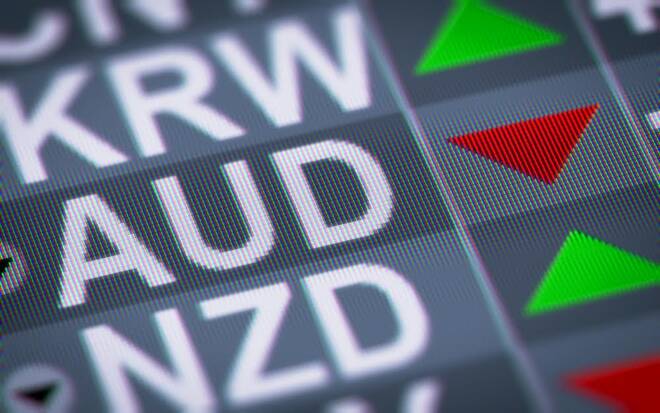Advertisement
Advertisement
AUD/USD and NZD/USD Fundamental Daily Forecast –Weak US Consumer Sentiment Data Fuels Aussie, Kiwi Rebound
By:
Friday’s stunningly weak University of Michigan consumer sentiment report, provided clear support for the Australian and New Zealand Dollars.
The Australian and New Zealand Dollars closed higher on Friday, reversing the previous day’s weakness as U.S Treasury yields plunged after the release of a weak U.S. consumer sentiment report, making the U.S. Dollar a less-attractive investment.
Despite the rebound, both currencies continued to trade sideways throughout the week as Aussie investors struggled with the Delta variant-related restrictions, and Kiwi investors maintained their focus on the upcoming Reserve Bank of New Zealand (RBNZ) interest rate decision.
On Friday, the AUD/USD settled at .7370, up 0.0033 or +0.45% and the NZD/USD finished at .7039, up 0.0038 or +0.54%.
At the end of the week, the AUD/USD and NZD/USD were trading above their August 6 lows. This means that traders have erased the impact of the U.S. July Non-Farm Payrolls report that raised the odds of a sooner than expected Fed tapering of economic stimulus.
Contributing to the sideways action, was Wednesday’s weak U.S. consumer inflation report and Thursday’s strong U.S. producer inflation data. Friday’s stunningly weak University of Michigan consumer sentiment report, provided clear support.
The University of Michigan consumer sentiment index tumbled to 70.2 in its preliminary August reading. That is down more than 13% from July’s result of 81.2 and below the April 2020 mark 71.8 that was lowest of the pandemic era.
It was the lowest reading for the measure since 2011. Economists surveyed by Dow Jones were expecting a reading of 81.3 for August.
Short-Term Outlook
The mixed U.S. consumer and producer inflation reports, combined with the U of M consumer sentiment report and the subsequent bearish reactions by U.S. Treasury yields and the U.S. Dollar suggests consumers are reasoning that the U.S. economy’s performance will be diminished over the next several months.
If Federal Reserve officials feel the same way then they may lean toward the dovish side in their next meeting on September 21-22.
Wiping out the gains attributed to the bullish July Non-Farm Payrolls report suggests investors have already moved on from this data, and may be looking forward to weaker U.S. labor market data in August due to the reinstatement of mask mandates and other health restrictions in several states.
For a look at all of today’s economic events, check out our economic calendar.
About the Author
James Hyerczykauthor
James Hyerczyk is a U.S. based seasoned technical analyst and educator with over 40 years of experience in market analysis and trading, specializing in chart patterns and price movement. He is the author of two books on technical analysis and has a background in both futures and stock markets.
Advertisement
